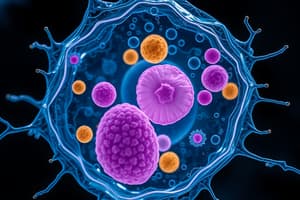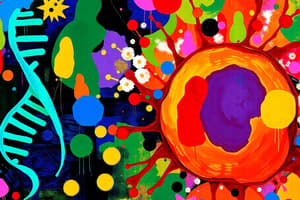Podcast
Questions and Answers
Who discovered that DNA consists of proteins and nucleic acids and isolated the nitrogen bases of nucleic acids?
Who discovered that DNA consists of proteins and nucleic acids and isolated the nitrogen bases of nucleic acids?
- Albrecht Kossel (correct)
- Erwin Chargaff
- Sir Archibald Garrod
- Friedrich Miescher
Who connected genes to enzymes by studying bread mould, proposing the 'one gene-one enzyme' hypothesis?
Who connected genes to enzymes by studying bread mould, proposing the 'one gene-one enzyme' hypothesis?
- Friedrich Miescher
- Beadle & Tatum (correct)
- Sir Archibald Garrod
- Albrecht Kossel
Who showed that DNA, not protein, carries the genetic information by studying Streptococcus pneumoniae?
Who showed that DNA, not protein, carries the genetic information by studying Streptococcus pneumoniae?
- Alfred Hersey and Martha Chase
- Sir Archibald Garrod
- Erwin Chargaff
- Oswald Avery, Colin MacLeod, and Maclyn McCarty (correct)
Who proved that DNA is the hereditary material by studying radiolabelled bacteriophage?
Who proved that DNA is the hereditary material by studying radiolabelled bacteriophage?
Who found that the ratios of adenine (A) to thymine (T) and guanine (G) to cytosine (C) in DNA are equal?
Who found that the ratios of adenine (A) to thymine (T) and guanine (G) to cytosine (C) in DNA are equal?
What is the study of an organism's genome, including both coding and non-coding regions?
What is the study of an organism's genome, including both coding and non-coding regions?
Which molecule contains the biological instructions that allow an organism to develop, survive, and reproduce?
Which molecule contains the biological instructions that allow an organism to develop, survive, and reproduce?
Where is DNA found in eukaryotic organisms?
Where is DNA found in eukaryotic organisms?
What is the structure of DNA composed of?
What is the structure of DNA composed of?
What does DNA replication involve?
What does DNA replication involve?
Flashcards are hidden until you start studying




